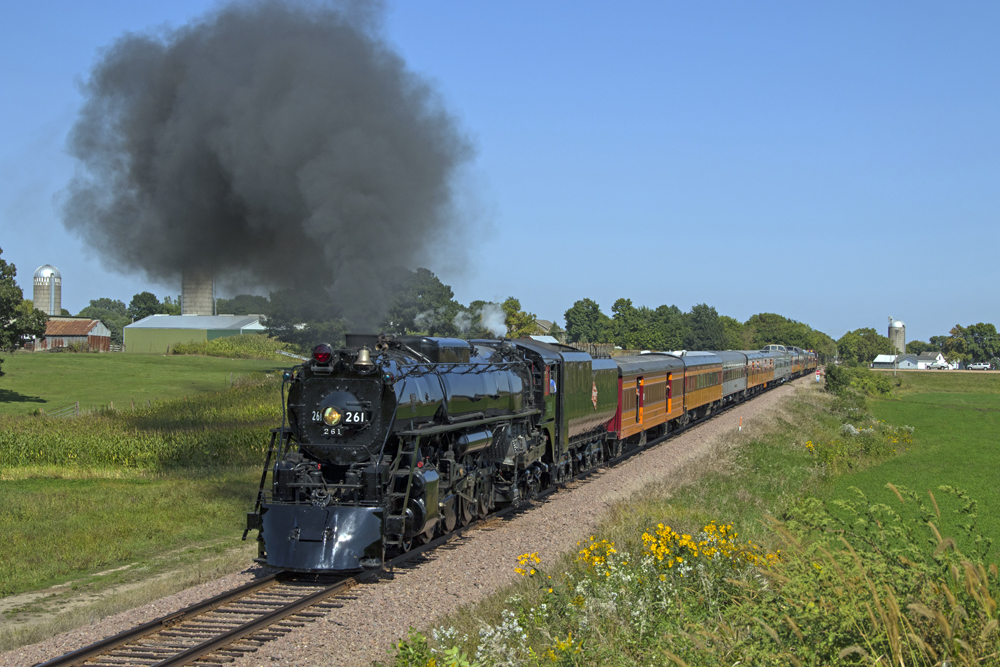
MINNEAPOLIS – The Friends of the 261, the non-profit organization that owns and operates Milwaukee Road S-3 class 4-8-4 No. 261, has launched a study to consider converting the locomotive from coal to oil firing. Friends of the 261 President and Chief Operating Officer Steve Sandberg said the group is conducting a feasibility study and cost benefit analysis for the possible conversion. It could cost up to $200,000 to convert NO. 261 to burn oil, Sandberg said.
If the group decides to proceed, it would not be the first time an S-3 has been changed to burn oil. Milwaukee Road owned ten S-3s built in 1944 and they worked exclusively in the Midwest. The outbreak of the Korean War brought an acute motive power shortage to the railroad as traffic boomed. In 1950, S-3s Nos. 262, 263, 267 and 269 were converted to burn oil and moved to the Idaho Division “gap” in Milwaukee Road’s electrified operations between Avery, Idaho and Othello, Wash. They made the last steam runs on the Idaho Division, with No. 267 making the final trip Dec. 17, 1954.
The Milwaukee Public Library has some of the original Milwaukee Road engineering drawings on file from the S-3 conversions, and long-time Friends volunteer and 261 fireman Ed Selinski has been working with the library to obtain copies of the drawings. The Friends has also solicited input from other steam operators who have done conversions in the past. Union Pacific Senior Manager Heritage Operations Ed Dickens, whose team converted UP Big Boy 4014 to burn oil, is a technical advisor for the project.
In addition to studying oil conversion, other work is being done on the 4-8-4. Rail wheel manufacturer ORX has shipped three new wheel sets to the Friends shop in Minneapolis where they will be installed under No. 261’s tender. Sandberg said while there was nothing wrong with the old wheels, they were last rebuilt almost 30 years ago, in 1992. They were the thinnest of the original wheels and for safety reasons it was decided to upgrade them at this time, Sandberg says. “Thanks to our donors, the 261 organization is using the time during COVID to make improvements to the 261 as well as our fleet of rail cars,” he said.
This year marks the 30th anniversary of the 1991 signing of the lease agreement between the National Railroad Museum of Green Bay, Wis., and North Star Rail, Inc. North Star returned the engine to service in 1993, with the non-profit Friends of the 261 taking over operation in 1995. The group purchased No. 261 from the Museum in 2010.
The Friends plan to have No. 261 back in operation this fall pulling excursions on the Twin Cities & Western Railroad Oct. 2-3, depending on pandemic restrictions. This year also marks the 30th anniversary of TC&W’s 1991 founding.
For more information go to www.261.com.






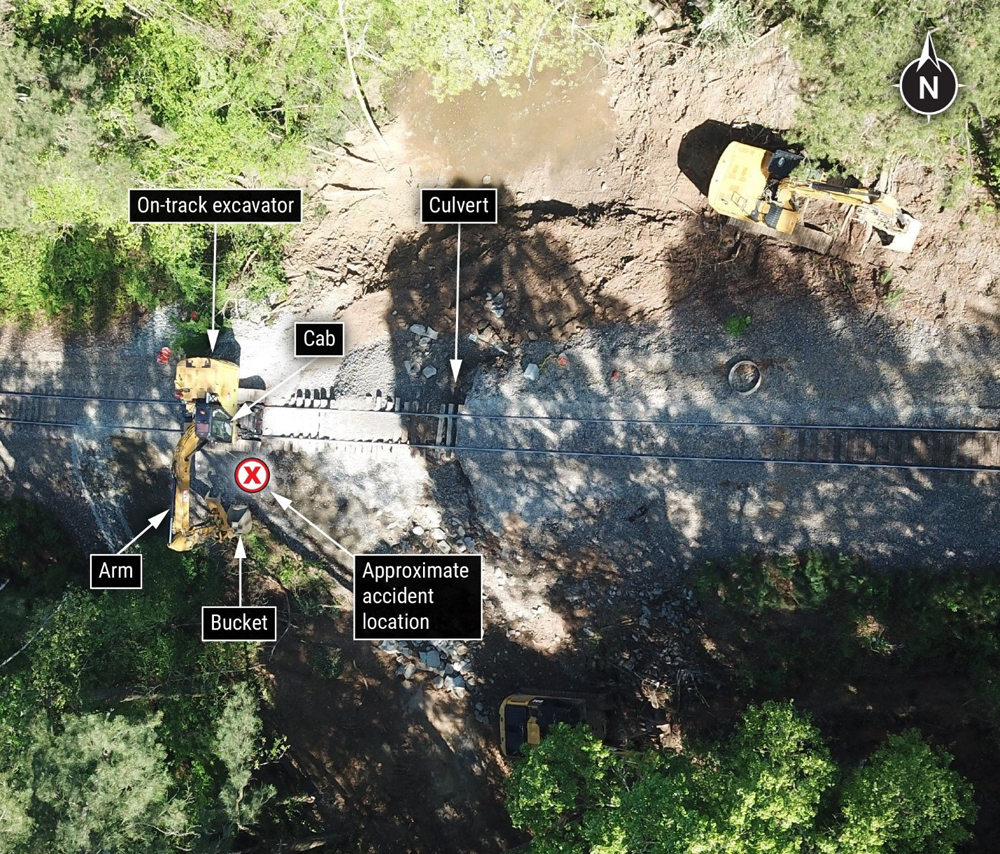
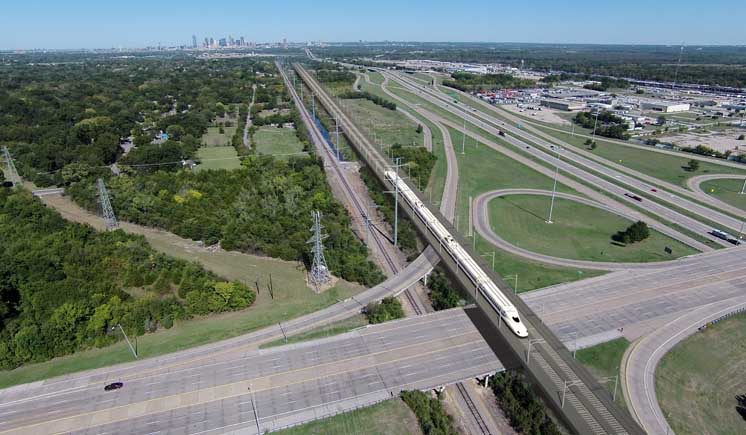
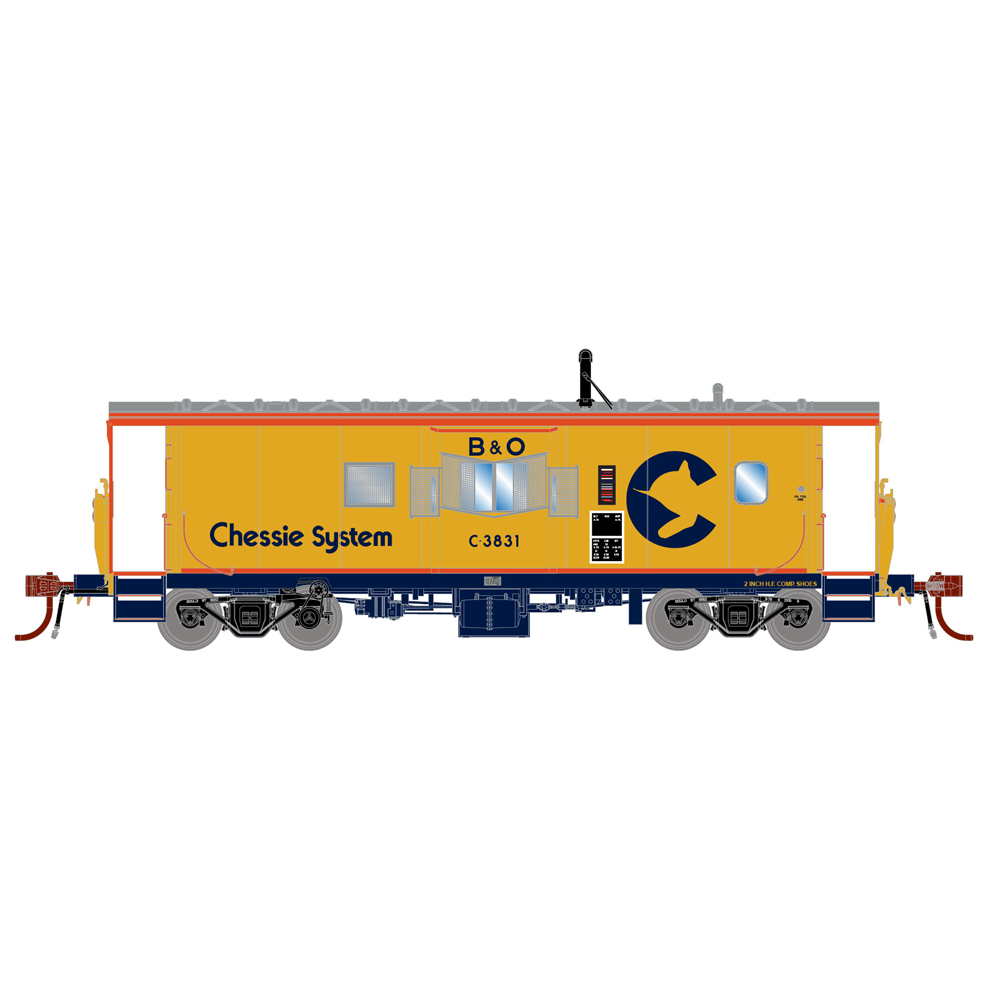
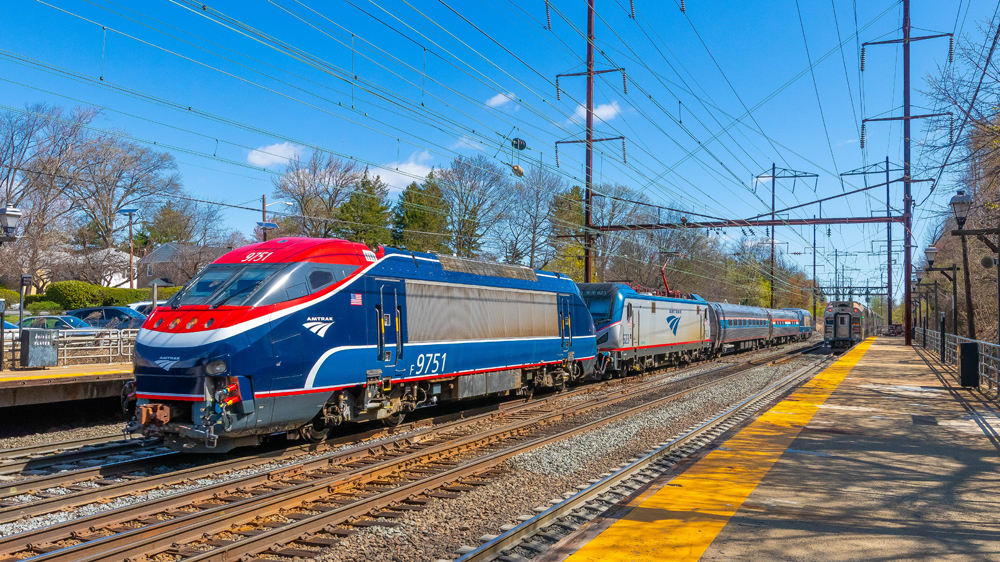




If memory is correct, Ed Dickens consulted with Steve Sandberg about the 4014 conversion to oil, i.e. no problem.
Coal or oil, as long as she’s in steam, it doesn’t matter to me what goes in her firebox.
I believe home heating oil is #2, so #5 would be much thicker, correct?
Good idea, as coal is getting scarce. And glad to hear Ed Dickens will be helping them. A friend is a good friend with him and she got us a private tour of Cheyenne steam shop in 2017 when we went west on our annual railfan trip. We saw the work being done on #4014, and we saw her again under steam in Ogden, when we attended the 150th Golden Spike celebration. And we got to talk to Ed again at W. Chicago, IL where she was on display. Another friend took a trip on #261 a few years ago and loved it, that is on our “bucket list”. My parents and I took a few trips with #4960 when Q ran steam trips. Dad got cinder in his eye on the open gondola and Mom got it out with her hankie. You could feel the cinders raining down when gondola was right behind the tender. I visited GCR in 2005 and there she was again, pulling our train but she now runs on oil too. Like seeing an old friend again.
It the conversion happens, my guess is it will burn #5 fuel oil, which is used by pretty much all the oil burning mainline locomotives, including 4014.
recycled oil you mean
What kind of oil would the 261 (and does the 4014) burn? Is it what I can buy at the diesel pump at my local gas station, or is delivered to my home for winter heating, or is it a heavier grade, like the “Bunker C” I’ve read about in earlier conversions?
I recall being told by the 4014 guys that they were running on a blend of recycled diesel locomotive crankcase oil and kerosene.
Why? If this is just to keep the ecokooks happy tell them where to go and how to get there. If there is a legitimate reason, I would be curious to know what it is.
Practicality is the main reason. Coal is not as cheap as it used to be, it also takes more work to store and transport the coal when you’re planning out your fuel stops on a long trip, like when 261 went to Pennsylvania in 1995. A coal burning locomotive also gives a lot of sparks, greatly increasing the risk of a fire breaking out along the tracks. Union Pacific had that happen on several trips with the 3985 back in the 1980s, it’s why the Challenger was converted to burn oil. On a coal burner, you also have to remove a lot ash and soot from the firebox after each day’s trip. You also have to have to figure out how to dispose of the material safely. With an oil burner you don’t have to worry about any of the problems related to ash disposal, fuel stops are easier to plan, and you don’t have to worry about accidentally starting a fire along the tracks.
that’s a good point
a steam locomotive being converted from coal to oil that’s no disappointment to me its still steam whether it burned wood, coal, or oil and mainly 261 will the latest 4-8-4 from the milwaukee road to be converted from coal to oil i wonder why the friends of the 261 didn’t think of it in the first place anyway ?
Kudos to Steve Sandberg for excellent leadership for 30 years.